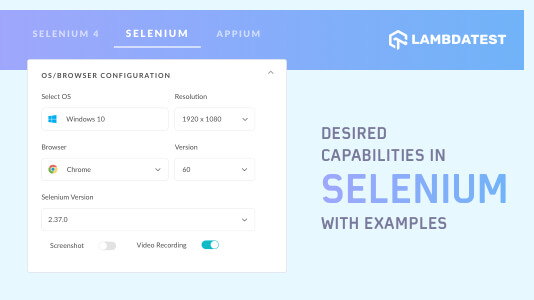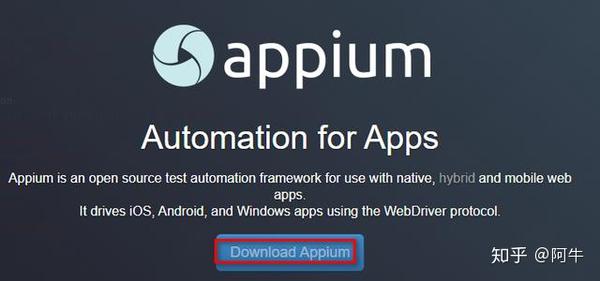

- #Appium app capabilities install#
- #Appium app capabilities driver#
- #Appium app capabilities android#
- #Appium app capabilities simulator#
The final option is a sort of hybrid between XPath and predicate strings: the -ios class chain locator strategy. String selector = "type = 'XCUIElementTypeButton' AND value BEGINSWITH 'bla' AND visible = 1" ĭriver.findElement(MobileBy.iOSNsPredicateString(selector)) īecause predicate matching is built into XCUITest, it has the potential to be much faster than Appium’s XPath strategy.
#Appium app capabilities driver#
This will be the xcodeOrgId value that will be used in desired capabilities.īasic configuration is to have below capabilities passed to IOS Driver Make note of the Bundle ID, This will be the updatedWDABundleId value that will be used in desired capabilities.ĩ.open Keychain Access mac app, click on my certificates, Double click on certificate and make note of the Organization unit
#Appium app capabilities install#
Since Appium will be automatically building the WDA app, we need to install Carthage so it is available to the WDA bootstrap process.



I already have one emulator that's open, and I will run the command. Then, the output will be the device ID and the type is the device.
#Appium app capabilities simulator#
Usually, we are using the device ID or the device name and our desired capabilities to be able to start a new session with the Appium server.įor example, in iOS, from the command line, we can use this command to list our iOS simulator device’s information on our machine, and also, we can find the UDID in this schema. Without the required, we can't start our session. Here you can click on "Desired Capabilities Documentation" to know the required desired capabilities because we have optional and required desired capabilities.
#Appium app capabilities android#
# Desired Capabilities for Appium for both Android and iOSĪs we mentioned before, Desired Capabilities are keys and values encoded in a JSON object, sent by Appium clients to the server when a new automation session is required.ĭesired Capabilities can be scripted in the WebDriver test in our test script or set within the Appium Server GUI via an inspector session.įor example here, this is the inspector session with Appium Server, when we start inspecting or want to add desired capabilities here in the inspector session with Appium server and to start our session. Chapter 11.2 - Configure and Run GitHub Actions with Appium


 0 kommentar(er)
0 kommentar(er)
